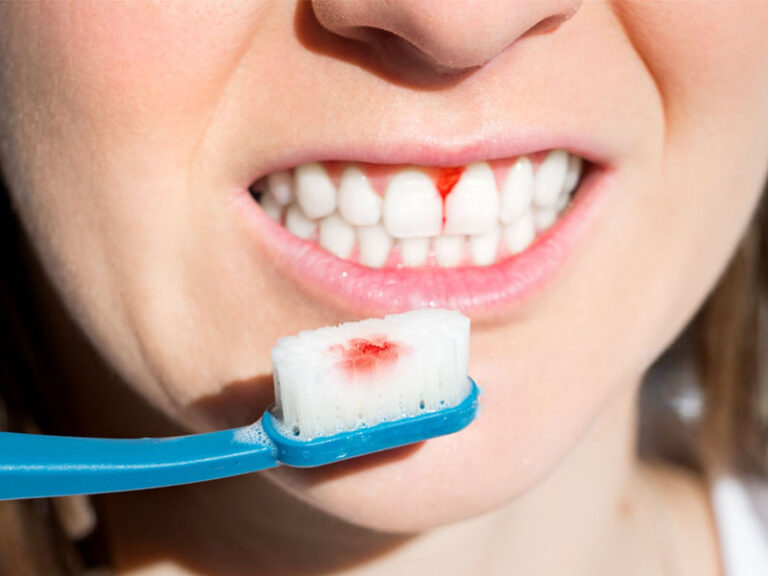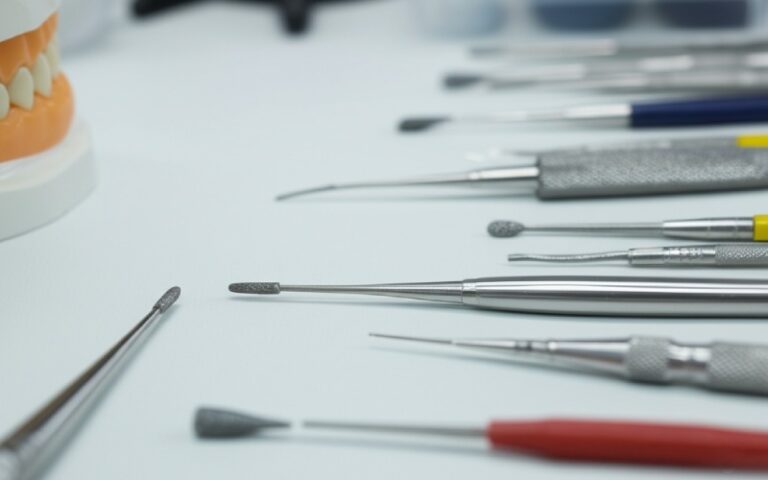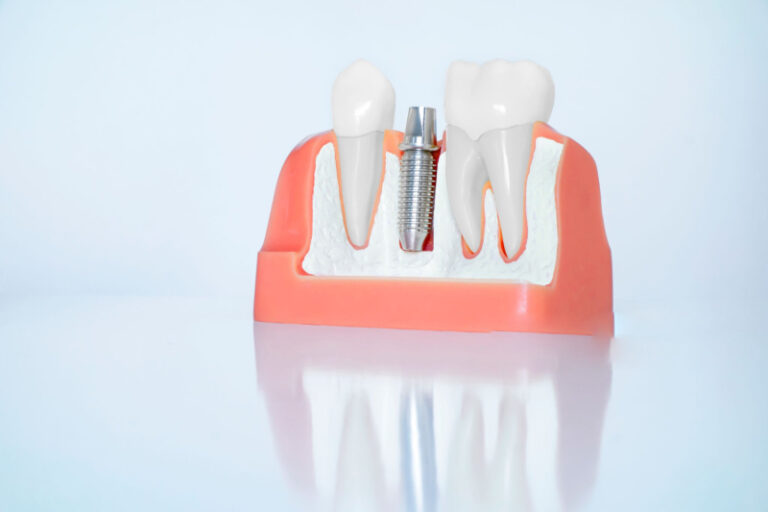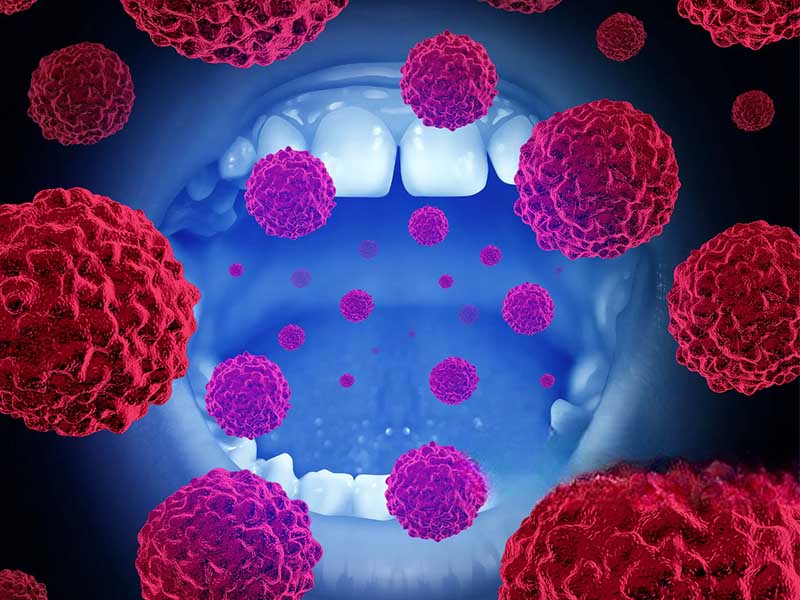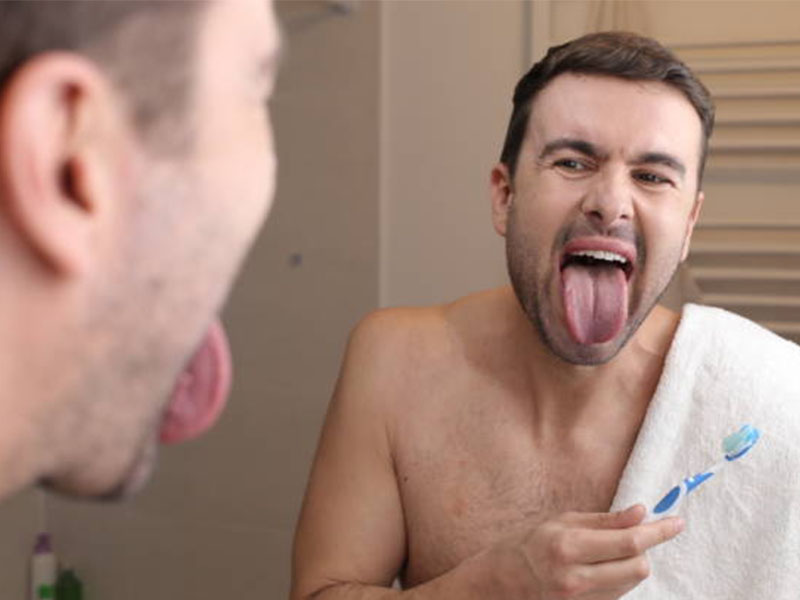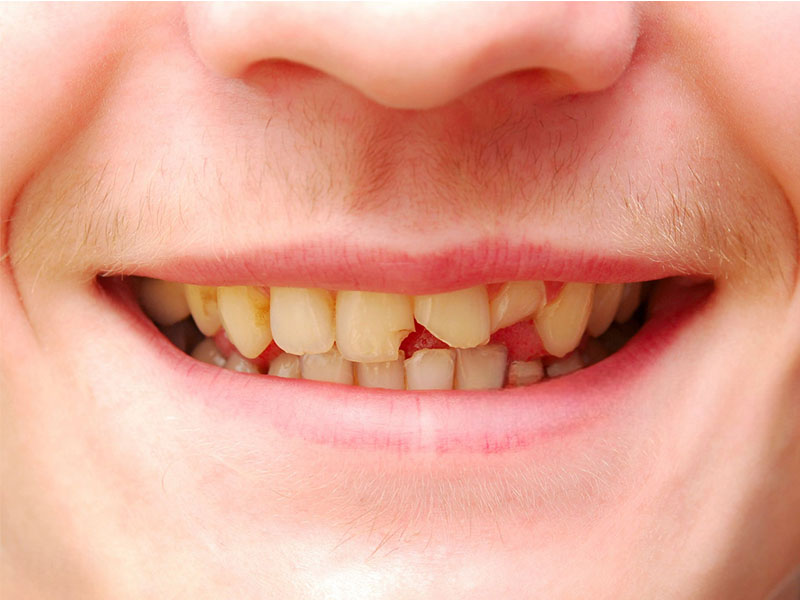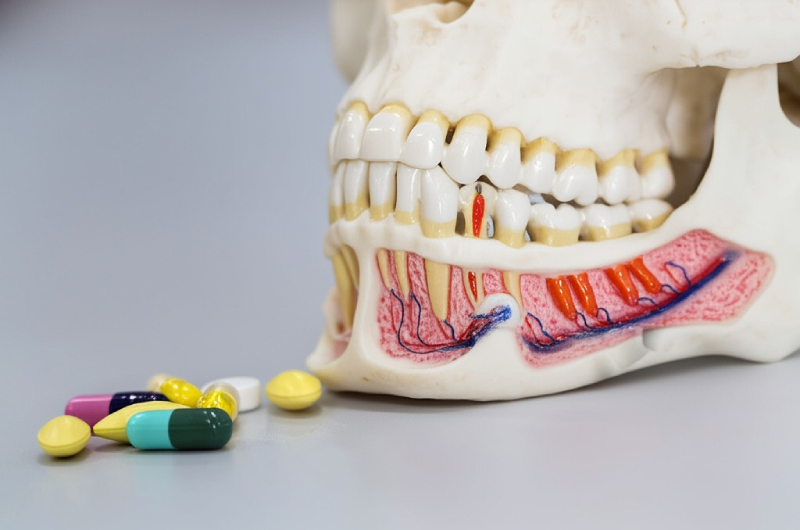
Your Guide to NTI Appliances: How They Work, Who They Help & How to Use Them in Your Practice
As a dentist you’re dealing with a common problem every day. It’s the patient with those nagging morning headaches. Or the one with sensitive teeth you just can’t figure out. Maybe it’s the patient with fillings that keep chipping for no good reason. And of course there’s the classic case: the heavy-duty bruxer. Their jaw muscles feel like concrete and their teeth are getting shorter by the year.
You know a traditional full-coverage splint is an option but getting patients to wear them can be a real struggle. They’re often bulky and uncomfortable and some patients just find them too much to handle.
But what if you had another tool you could use? A smaller device that gets to the root of the problem—the overactive muscles themselves—instead of just shielding the teeth from the damage.
That’s where the NTI-TSS appliance comes in. If you’ve heard about it but you’re a little fuzzy on the details—how it works, who it’s for, or how to add it to your practice—you’re in the right place. We wrote this guide for you, the dentist on the ground. We’ll cut to the chase and give you the straightforward practical info you need to decide if NTI therapy is a good fit for your patients and your office.
Table of Contents
I. Getting to Know NTI Appliances
Let’s start at the beginning. The NTI-TSS appliance stands for Nociceptive Trigeminal Inhibition Tension Suppression System. That’s a huge mouthful so let’s just call it the NTI. Unlike a regular nightguard that covers all your top or bottom teeth the NTI is a small custom-made device. It only fits over your front teeth usually the ones on the top or bottom.
A. How It Works: The Trigeminal “Circuit Breaker”
The real magic of the NTI isn’t its size. It’s how it works. Its main job is to stop the back teeth (molars and premolars) from ever touching.
Think of it like this. Your patient’s strongest clenching muscles are the masseter and temporalis. These muscles fire up with incredible power when the back teeth and canines touch. The NTI creates just one tiny contact spot between the bottom front teeth and the appliance.
So when the jaw tries to clench only the front teeth can touch. This sets off a nerve reflex. Basically the big nerve that controls your chewing muscles—the trigeminal nerve—senses this intense pressure on the front teeth and thinks “whoa that’s dangerous.” As a reflex it tells the powerful clenching muscles to chill out.
It’s a circuit breaker. You prevent the back teeth from getting a good grip so you slash the intensity of the muscle contractions. Some studies show it reduces the muscle firing by up to 80%. What’s the result? The habit of intense clenching is stopped not just blocked.
B. How NTIs Are Different from Regular Nightguards
It’s really important to get this: an NTI is not just a “mini nightguard.” They do different jobs and work in completely different ways.
| Feature | Traditional Full-Coverage Splint | NTI-TSS Appliance |
|---|---|---|
| Main Goal | Protect teeth from wear; spread out biting forces. | Stop muscles from overworking by keeping back teeth apart. |
| How it Works | Creates a “perfect” bite; puts a physical barrier between teeth. | Triggers a muscle-relaxing reflex; acts as a deprogrammer. |
| Coverage | Covers all the biting surfaces of one arch. | Covers only the front teeth. |
| Size & Comfort | Can be bulky and might affect speech and comfort. | Small and not as noticeable which often means patients actually wear it. |
| Best For | General grinding protecting dental work some jaw joint problems. | Intense clenching muscle-related jaw pain tension headaches and preventing migraines. |
| Potential Problem | Can sometimes make muscles work more if not adjusted perfectly (the “chew toy” effect). | Risk of a small tooth movement or a back teeth bite issue if not checked regularly. |
II. Clinical Indications: When Should You Prescribe an NTI?
The NTI is a special tool not a fix-all. Knowing when to use it is the secret to success.
A. Main Uses
- Bruxism (Especially for Clenchers) The NTI can be a game-changer for patients who are heavy clenchers not big side-to-side grinders. You shut down the overactive masseter and temporalis muscles so you’re treating the source of the force not just cleaning up the mess. This brings amazing muscle relaxation and can get rid of jaw pain and fatigue.
- Preventing Migraines & Tension Headaches (FDA Cleared) This is probably the NTI’s biggest and most unique use. The NTI-TSS appliance is FDA-cleared to help prevent medically diagnosed migraines and tension headaches. The link is the trigeminal nerve. When someone clenches hard all night that nerve gets constantly fired up and it’s a major player in how migraines work. By turning down that nighttime clenching you can seriously cut the number and intensity of these headaches. The research is solid here. Studies show that 75-80% of people with migraines get way fewer headaches.
B. Other Benefits and Uses
- Easing Muscle-Related TMD/TMJ Pain For TMD that’s all about the muscles the NTI can bring quick relief. If your patient’s main symptoms are sore muscles a tight jaw and pain when you press on their chewing muscles the NTI is a great option. It’s important to know that for problems inside the joint itself (like a clicking jaw) a full-coverage splint is usually the better choice.
- Protecting Your Dental Work from Crazy Forces You just put a beautiful set of veneers or a big implant bridge on a known bruxer. How do you protect your work and their investment? A normal guard protects against wear but an NTI can reduce the actual force hitting those restorations. This can be huge for preventing cracked porcelain loose screws and other force-related failures.
- Slowing Down Tooth Wear Abfractions & Sensitivity These are the classic signs of too much biting force. By cutting down the clenching intensity the NTI helps stop tooth wear in its tracks. It also reduces the stress that causes those little notches at the gumline (abfractions) and can even help with tooth sensitivity from bite trauma.
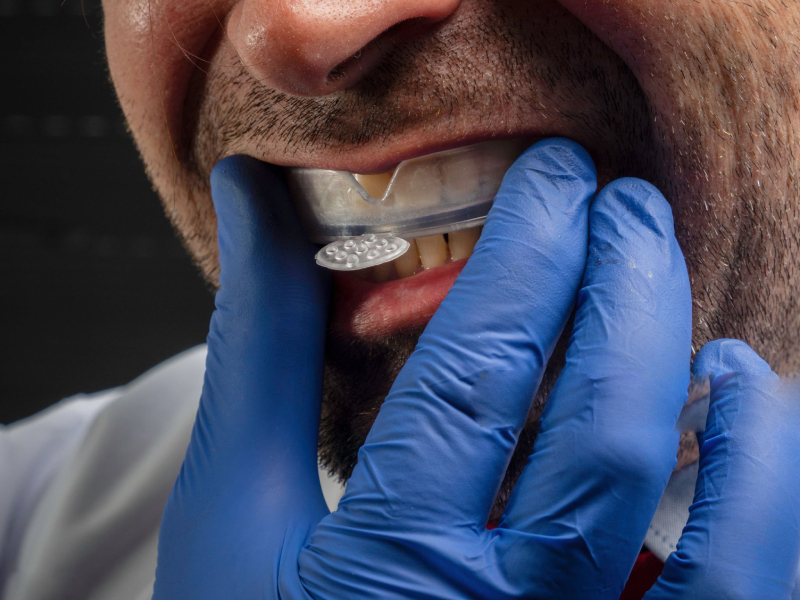
III. Picking the Right Patient (and Who to Avoid)
Writing a prescription for an NTI takes a good eye. A great result depends on picking the right patient just as much as it depends on the device.
A. How to Spot the Perfect Candidate
The best NTI patient often shows up with one or more of these signs:
- Main Complaint: Frequent tension headaches diagnosed migraines or waking up with sore tired jaw muscles.
- What You See: Not much wear from grinding but clear signs of clenching (like big jaw muscles cracks or a white line on their cheeks).
- Dental Health: Healthy front teeth with good bone support and they aren’t loose.
- Attitude: They want a solution and are willing to wear a small appliance to get it.
Your exam should always include feeling the jaw muscles checking their medical and headache history and a close look at their bite.
B. When to Absolutely Not Use an NTI
There are times when an NTI is the wrong choice and could even cause problems.
- Known Joint Problems: If a patient has a clicking jaw that a full-coverage splint helps by supporting the back teeth an NTI could make things worse.
- Bad Gum Disease: Putting all the bite force on front teeth that are already loose is a recipe for disaster. You risk making them even looser.
- Untreated Sleep Apnea: An NTI is NOT a treatment for obstructive sleep apnea (OSA). Using one on an OSA patient without a doctor’s okay can be risky because it might change how their airway works.
- Really Bad Bites: Patients with a severe overbite (Class II) or underbite (Class III) might not have a stable spot for the NTI to work right.
C. Be Careful With These Cases
These are “proceed with caution” situations. You can do it but you need to watch them closely:
- Growing Kids/Teens: Using an NTI when back teeth are still coming in requires careful monitoring so you don’t create a permanent open bite in the back.
- Strong Gag Reflex: The NTI is small but some people with a really bad gag reflex might still have trouble with it.
- Missing a Front Tooth: If a patient is missing one of their front central incisors getting a stable single contact point can be tricky and you might need a special design.
IV. The Clinical Steps: From Impression to Delivery
Making and fitting an NTI in your office is quick and simple. It’s an easy service to add to your day.
- First Exam and Diagnosis: This is the most important step. Make sure the patient is a good fit based on everything we just talked about. Write down all your findings like how often they get headaches and how sore their muscles are to set a baseline.
- Good Impressions: You need a high-quality alginate or PVS impression. The lab slip should be crystal clear that you want an NTI-TSS style appliance. You can also use chairside systems to make one in a single visit.
- Fitting and Adjusting in the Chair:
- Fit: Make sure the appliance sits all the way down and stays in place. It should be snug but it shouldn’t hurt.
- The Adjustment: This is the key. With the NTI in have the patient bite down. Use articulating paper to mark where the teeth touch on the appliance. Your goal is a single tiny contact point on one or both of the opposing front teeth.
- Side-to-Side Movements: Have the patient slide their jaw left right and forward. The little ramp on the NTI must immediately separate all the back teeth and canines. There should be zero back teeth touching in any movement. Adjust and polish that ramp until it feels glassy smooth.
- Telling the Patient What to Do:
- When to Wear It: Tell them to wear it only when they sleep unless you say otherwise for daytime headaches.
- What to Expect: Explain that their front teeth might feel a little sore for a few days. That’s normal. Also their bite might feel “off” for a few minutes after they take it out in the morning. This feeling should go away fast.
- Cleaning: Tell them to clean it every day with a toothbrush and water or a denture cleaner.
- Follow-Up: Book a follow-up appointment in one or two weeks to check the fit the bite and see how they’re doing.
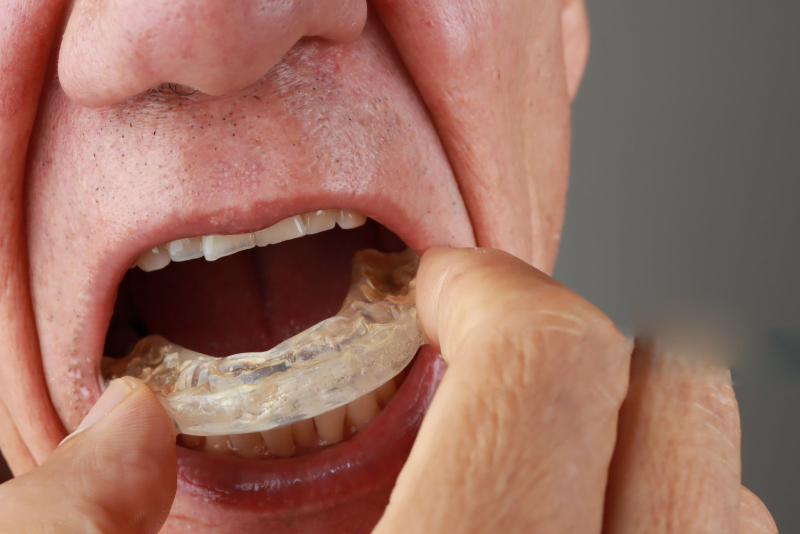
V. Patient Follow-ups and Fixing Problems
After you deliver the NTI your job is to manage the patient and fix any issues that pop up.
A. Follow-up Schedule
A good plan is to see them at 1 week 1 month and then every 6 months. At every visit you should:
- Ask how their symptoms are (headaches muscle pain).
- Feel their jaw muscles again to see if they’re less sore.
- Check the appliance for fit and wear.
- Most importantly check their back teeth bite with the appliance out. Make sure nothing is changing.
B. Troubleshooting Common Issues
- “It falls out at night.” The fit is probably too loose. You can often tighten this in the office if it’s a thermoplastic material or it might need to be relined or remade.
- “My front teeth are sore.” This is common at first but should go away. If it keeps hurting the contact point might be too sharp. Re-polish it to be smoother and a little wider.
- “My bite feels weird in the morning.” This feeling of the back teeth not touching is because the muscles are relaxed and there are slight fluid shifts in the jaw joint. It should be gone in less than 30 minutes. If it lasts longer you need to check it out.
C. The Biggest Potential Side Effect: The Posterior Open Bite
The number one concern with NTI therapy is the risk of creating a posterior open bite. This happens if the back teeth over-erupt because they aren’t touching anything for a long time.
How to Lower the Risk:
- Pick the Right Patients: Don’t use it on kids or teens with teeth still coming in.
- Monitor Closely: Regular follow-ups to check the bite are an absolute must.
- Educate the Patient: Tell the patient to call you right away if they notice their bite feels different and doesn’t go back to normal.
When you use it right and keep an eye on things the chance of a permanent bite change is low. It’s reported to be under 10% and most issues are temporary and can be fixed.
VI. The Proof: Research That Backs Up the NTI
For dentists who love data the research behind the NTI is pretty strong.
- Less Bruxism: Many studies using EMG (which measures muscle activity) have shown that the NTI can cut down sleep-time jaw muscle activity by 60-80%. This is hard proof that the device actually calms down the clenching.
- Fewer Headaches & Migraines: The key study by Dr. Shankland and the FDA 510(k) clearance that followed are powerful. The data shows that about 77% of people with medically diagnosed migraines had an 82% drop in migraine attacks when using the NTI.
- Comparing Splints: While studies vary head-to-head comparisons have shown the NTI is just as good as and sometimes better than full-coverage splints for easing muscle-related pain.
- Patients Actually Wear It: Because it’s so small patients are more likely to wear it. Compliance rates are usually reported to be high somewhere between 70-85%.
VII. Adding NTI Appliances to Your Dental Practice
Bringing NTI therapy into your office can be great for your patients and your business.
A. Train Your Team and Educate Patients
Get your whole team on board. Your hygienists should know how to spot the signs of clenching and headaches. Your front desk staff should know the basics so they can answer questions. Make simple brochures or a page on your website that explains the link between clenching and headaches in simple terms.
B. Getting Paid: Billing and Insurance
Billing for an NTI can be tricky. The most common code used is D7880 for an occlusal orthotic device. Insurance coverage is all over the map. Some medical plans might cover it for migraine prevention while dental plans might see it as a bruxism appliance. It’s often best to charge a flat fee for the treatment and then offer to help the patient file the claim for possible reimbursement.
C. How to Talk About It
You don’t need a huge marketing budget. Just start asking better questions. Add “Do you get frequent headaches?” to your new patient forms. When you see abfractions or a cracked crown instead of just saying “You’re a grinder” you can say:
“I’m seeing some signs that you’re putting a lot of force on your teeth at night. This can often be connected to tension headaches or jaw pain. We have a small comfortable device that can help reduce that force and it might give you amazing relief. Would you like to hear more about it?”
D. A Quick Case Study
Meet “Sarah” a 35-year-old who works in marketing. She comes in with chronic tension headaches 3-4 times a week and a tired jaw. Her back teeth look fine but her jaw muscles are sore and feel big. She tried a full-coverage splint from her last dentist but said she “couldn’t sleep with that thing in.” Sarah is a perfect candidate for an NTI. We made one for her and after a week her headaches were down to once every two weeks and her jaw pain was gone. That’s a life-changing result from a simple dental appliance.
VIII. Final Thoughts: The NTI’s Role in Modern Dentistry
The NTI-TSS appliance won’t replace every occlusal splint but it is an amazing and specific tool for a certain group of your patients. It offers a unique science-backed way to treat the cause of overactive muscles. This provides incredible relief for patients who suffer from severe clenching tension headaches and migraines.
By understanding how it works mastering the clinical steps and picking your patients carefully you can add a powerful treatment to your practice. You can solve problems that patients thought they just had to live with. You’ll protect your dental work and most importantly you’ll make a huge difference in your patients’ quality of life. That’s a win for them and a satisfying way to expand your role as a healthcare provider.

